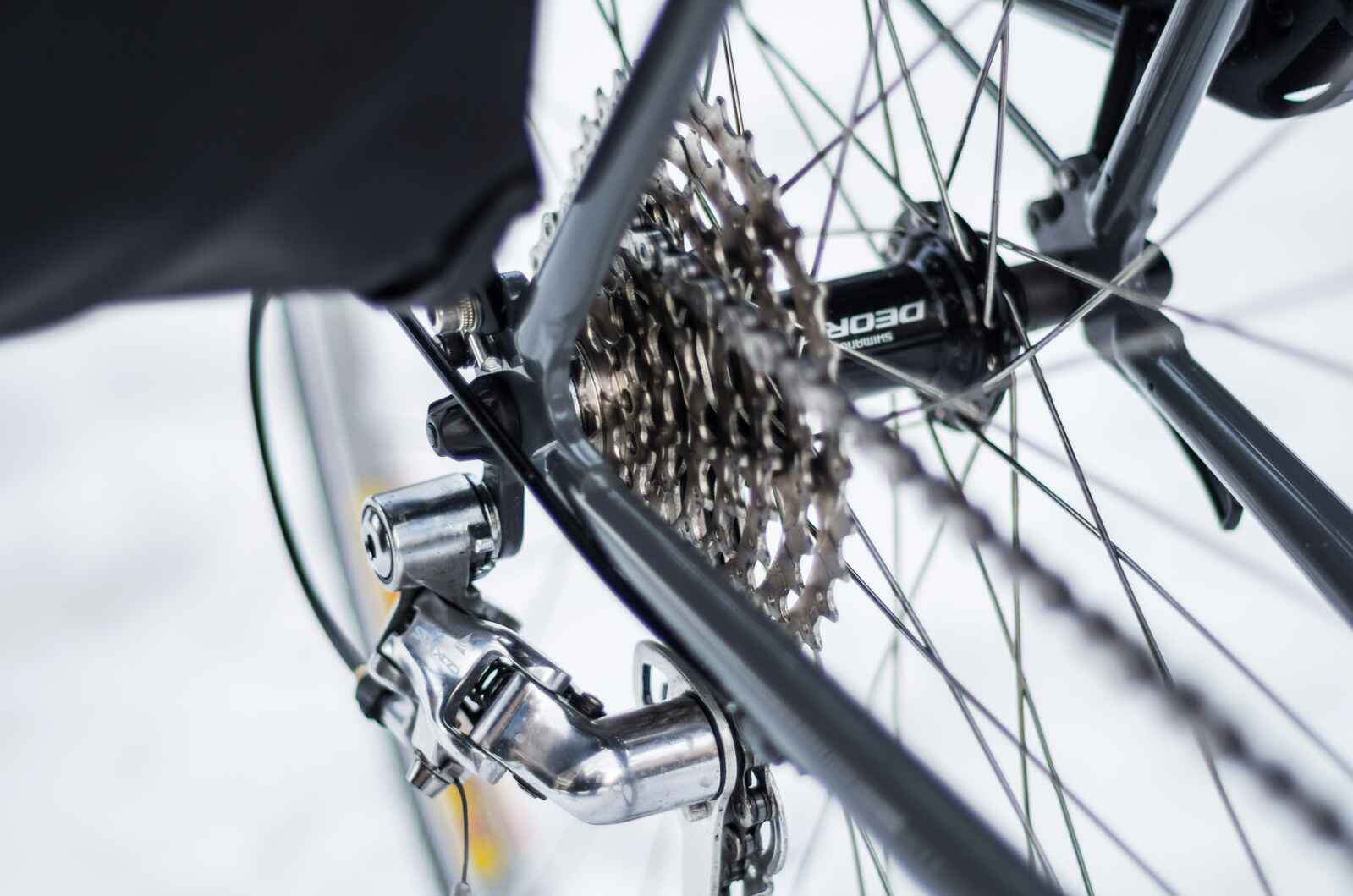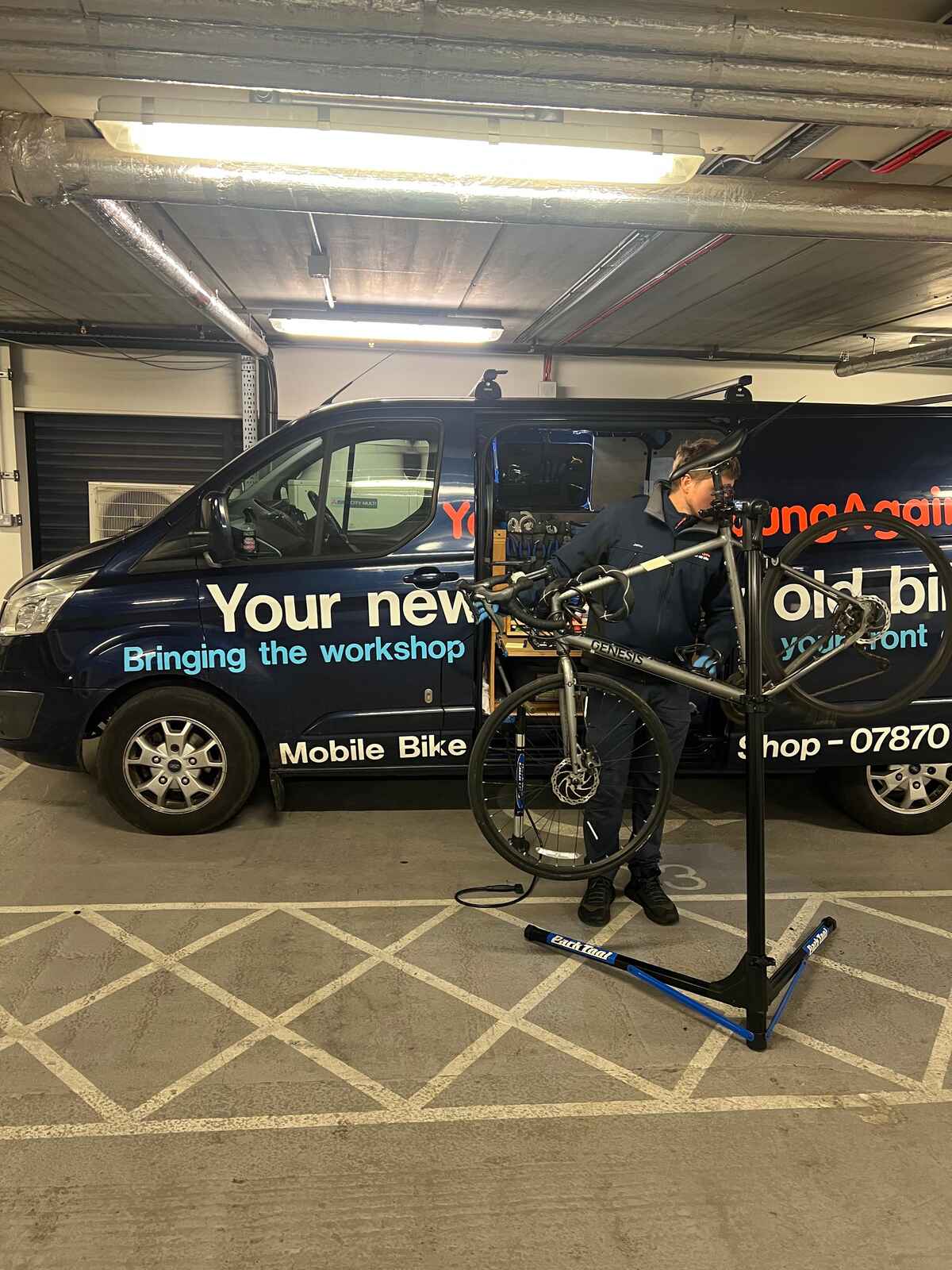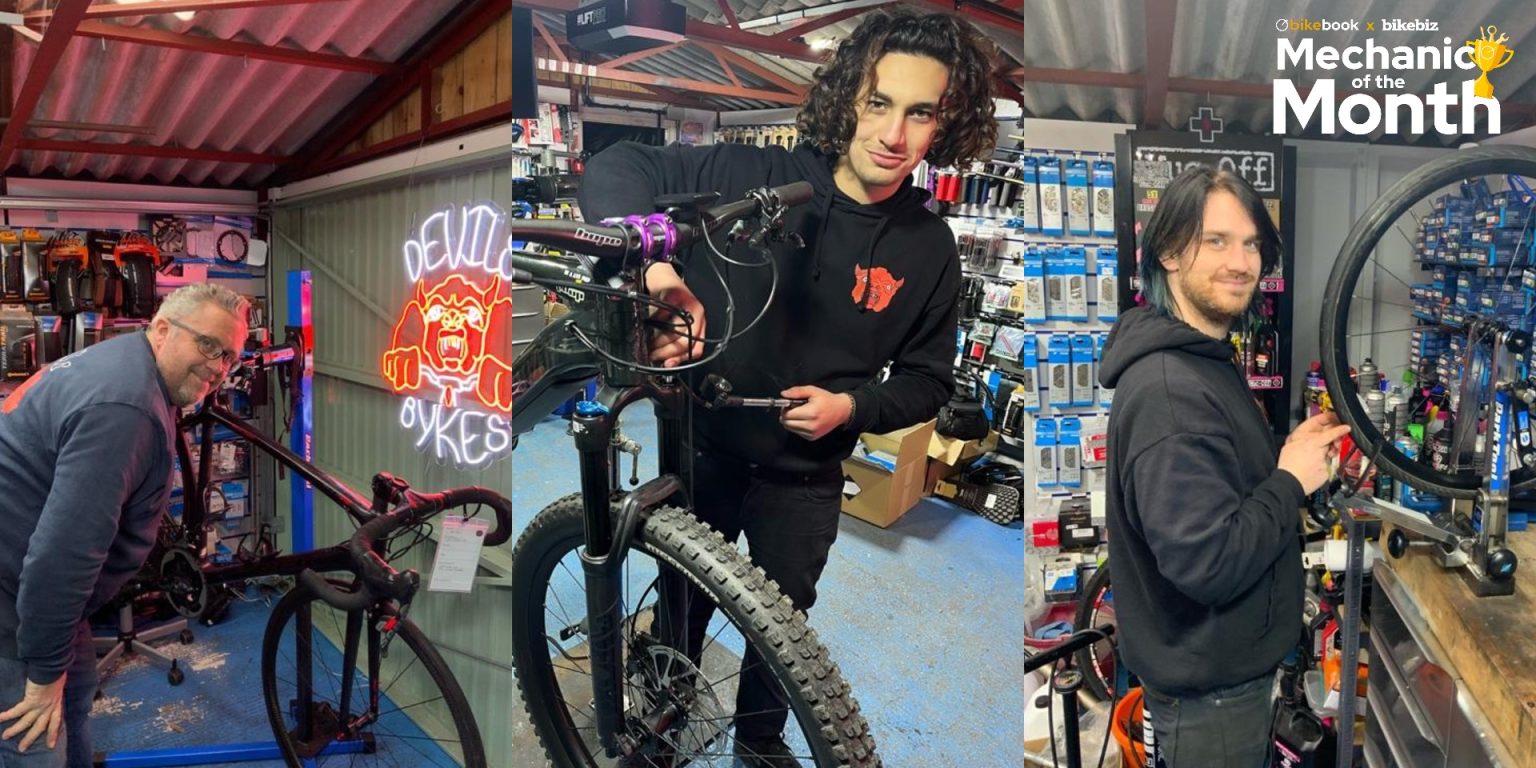December 24, 2025
•
10 minute read
How to Fix Squeaky Brakes on a Bike
You've just embarked on a leisurely ride, only to be accompanied by the unwelcome soundtrack of squeaky brakes.
Jake Fieldsend
Founder & CFO
You've just embarked on a leisurely ride, only to be accompanied by the unwelcome soundtrack of squeaky brakes. It's a scenario every cyclist dreads—not only does it irritate your ears, but it may also signal potential safety risks. So, why are your bike brakes squealing, and how can you silence them for good? In this guide, we'll explore step-by-step solutions to rid your bike of these squeaks. From identifying the root cause to adjusting your brake pads correctly, we’ll ensure your ride is smooth and silent.
1. Identifying the Cause of Squeaky Brakes
1.1 Why Do Bike Brakes Squeak?
The shrill sound of squeaky brakes is more than just annoying—it's a symptom of something amiss. Primarily, squeaking is caused by vibration of the brake pads against the rims or discs. This vibration could stem from dirty or glazed pads, misaligned components, or even moisture. When moisture finds its way into brake pads, especially in wet weather conditions, it can temporarily cause the sound you're hearing.
However, environment isn’t always the culprit. Consider checking if there's any dirt or debris lodged in your brake assembly. Sometimes, a simple cleaning is all that's needed. Irregularities in the rim surface can also lead to this annoying noise. So, inspecting your bike closely can be highly insightful.
- Dirt and grime: Large particles getting caught in the brake pads.
- Misalignment: Pads not perfectly aligned can cause recurrent noise.
- Weather conditions: Wet pads can temporarily squeak but dry over time.
Pro-tip: A little chalk on the brake pads can help you detect alignment issues. If the chalk wears off unevenly after a short ride, you need to realign your pads.
1.2 Types of Brake Systems and Typical Issues
Different brake systems come with their distinct quirks. Rim brakes—popular on road and hybrid bikes—tend to squeak if the pads aren't toed in correctly. Disc brakes, often seen on mountain bikes, might squeal if the rotor or pads are contaminated.
For rim brakes, correct toe-in—where the leading edge of the brake pad makes contact with the rim first—can often remedy squeaking. On the other hand, disc brakes demand spotless cleanliness. Any oily residue on the rotor can lead to a noisy ride. Ensure that pads are bedded in properly; this process involves performing some controlled stops to let the pads conform to the rotor surface geography.
- Rim brakes: Ensure pads are toed-in. Check pad wear and alignment.
- Disc brakes: Keep rotor surfaces pristine. Bed in new pads thoroughly.
Pro-tip: For disc brakes, use isopropyl alcohol to keep the rotors hygienic. Avoid using soap—residues can exacerbate squeaking.
1.3 Checking for Wear and Tear
Recognising wear and tear requires knowing what to look for. Brakes need regular inspection—too worn, and they risk failing when needed most. For rim brakes, examine the pad surface: they often have wear lines etched to indicate when they need replacement. If these lines are disappearing, it’s time to swap them out. Also, check the rim itself for signs of wear like concaving.
On disc brakes, pad thickness is crucial. Most have a safe threshold below which performance declines rapidly. If you notice a metallic grinding noise, it’s likely you're braking on the pad’s metal backplate—a clear sign of overdue replacement. Furthermore, inspect the rotor for wear indicators like grooves or warping. This is seldom looked at by casual users but can dramatically impact braking efficiency and safety.
- Rim brake pads: Look for wear lines; consider replacing when faint.
- Disc brake pads: Replace if thickness is near minimum specification.
Pro-tip: Incorporate a brake inspection into your monthly bike maintenance routine—catching potential problems early ensures safety and longevity.
2. Fixing Squeaky Brakes on Your Bike
2.1 Cleaning the Brake Pads and Rims/Discs
Cleaning your brake pads and rims or discs is often the quickest way to combat that annoying squeaky sound. Dirt, grime, and oily residues frequently build up on these parts, diminishing braking efficiency and causing noise. Begin by removing the wheel if it's a rim brake or flipping your bike if it’s a disc brake. Use a piece of emery paper or a fine sandpaper to gently rub the brake pads—this helps to remove any glazed surface layers. Ensure you wipe away any rubber debris.
For rims, utilise a dedicated bike brake cleaner or a simple mix of water and mild washing-up liquid. Use a clean cloth or an old toothbrush to scrub the rims thoroughly. If dealing with disc brakes, make sure to use a disc brake cleaner to remove contaminants. Avoid touching the disc surfaces with bare hands, as oils from your skin can lead to further contamination and noise.
- Remove Wheel: Facilitates easy access for cleaning.
- Use Emery Paper: Lightly sand the pads to break glaze.
- Rim Cleaning: Use water and dish soap or a bike-specific cleaner.
- Disc Brake Caution: Employ only disc brake cleaners.
Pro-tip: Always have a spare set of brake pads handy. They are an inexpensive replacement if cleaning doesn't solve the squeak.
2.2 Adjusting Brake Pads for Proper Alignment
Misaligned brake pads often cause squeaking due to uneven surface contact. You'll want to check each pad to ensure there’s even wear, which indicates proper alignment. Adjusting them can be a simple process, but precision is key. Start by loosening the bolts holding the pads in place, then align them parallel to the braking surface. Properly aligned pads should make full contact at the same time across the entire braking surface.
A little trick called "toeing-in" can also greatly reduce brake noise. This involves adjusting the leading edge of the brake pad so that it makes contact slightly before the trailing edge. This can be done by placing a business card under the rear end of the brake pad before tightening the bolt. This adjustment helps in absorbing vibration and noise.
- Loosen & Align: Ensure the full pad contacts the braking surface evenly.
- Try "Toe-in": A slight angle can help reduce noise.
- Check Wear: Even wear signals correct alignment.
Pro-tip: Always perform a quick spin of the wheel after adjusting the pads to ensure there's no rubbing. Rubbing could imply further adjustments are required.
2.3 When to Seek Professional Help from Bikebook
If you’ve cleaned and adjusted but those brakes just won’t quiet down, it might be time to consult with a professional. While these repairs might seem simple, some cases require expert inspection—for instance, when there's excessive pad or rotor wear. Unchecked, these could deteriorate further, leading to costly replacements or even compromised safety.
This is where Bikebook becomes invaluable. Our platform makes it easy to find skilled local mechanics who can accurately diagnose and fix squeaky brakes with precision. Whether you're seeking a quick repair or a comprehensive service, Bikebook connects you with experienced professionals who can offer targeted solutions, ensuring every ride is smooth and silent without those pesky squeaks interrupting your cycling joy.
- Identify Extreme Wear: Too much wear means professional replacement needed.
- Safety Check: Professionals can ensure all components function correctly.
- Use Bikebook: Connect with local experts for hassle-free repairs.
Pro-tip: Take advantage of Bikebook's review system to find highly-recommended mechanics, ensuring you get the best service for your bike without leaving your local area.
3. Preventing Future Brake Noise
3.1 Routine Maintenance Tips
To keep those frustrating brake noises at bay, establishing a routine maintenance habit is essential. First off, regular cleaning is non-negotiable. Dust, grime, and debris often cling to the rims and brake pads, leading to that annoying squeak. Simply using a gentle brush and soapy water can work wonders.
- Inspect the Brake Pads: After cleaning, closely examine your brake pads. Look for any glazing or wear and replace them promptly if needed.
- Check Rim or Disc Condition: Scrutinise for any scratches or warping as these imperfections can cause noise.
- Keep Bolts Tightened: Ensure that all bolts are snug. Loose components can be a hiding cause of that squeaky sound.
- Apply Specialised Lubricants: Use lubricants on pivot points—never the brake surface!—to maintain smooth operation.
- Adjust Brakes Correctly: Misaligned brakes need adjustment to ensure they hit the rim or disc evenly, maintaining your braking power and silence.
Pro Tip: Sometimes, just a routine visit to an honest mechanic via Bikebook can spot underlying issues your eyes might miss.
Incorporating these habits helps extend the performance of your brakes and decrease noise annoyances. You'll avoid not only discomfort but potential safety hazards.
3.2 When to Replace Brake Components
Knowing when to replace your brake components can be tricky. However, there are clear signs that indicate it's time for a change. Persistent squeaking, despite thorough cleaning and adjustments, often signals that replacement is in order.
- Glazed Brake Pads: If pads appear shiny and less effective, they are past their prime.
- Uneven Wear on Pads: Unequal wear on your brake pads can mean misalignment or simply old age.
- Severely Worn Discs or Rims: Any grooving or visible thinning on discs or rims screams for attention.
- Fading Braking Power: Trust your instincts—if stopping doesn't feel as sharp, it's a tell-tale sign.
- Cracks or Chips: Any structural damage is an outright no-go!
Pro Tip: Use Bikebook to locate a local mechanic who can inspect and advise on necessary replacements.
With these guidelines, you’ll keep your braking system in top-notch condition, ensuring a smooth and safe ride every time.
3.3 Using Bikebook to Find Regular Bike Servicing Near You
Why struggle with endless online searches when finding a trustworthy bike service can be seamless with Bikebook? Here's how this platform can be your bike's best ally.
- Easy Comparison: Search and compare services effortlessly. Reviews and prices make decision-making straightforward.
- Connect with Local Talents: Avoid generic service centres. Instead, directly support local pros who understand your needs.
- Scheduling Made Simple: Enter your postcode, pick a service, and let the mechanic reach out. It’s all at your fingertips.
- On-the-Go Services: Can't make it to the shop? Bikebook offers mobile mechanics to ensure your bike gets care anytime, anywhere.
- Accessible and Free: Best part—it’s free! No hidden charges to worry about.
Pro Tip: Incorporating regular servicing via Bikebook can prevent many issues from snowballing into persistent brake noise.
By leveraging Bikebook, you're aligning with local expertise while ensuring your bicycle stays in optimal condition effortlessly.
Wrapping up, managing brake noise involves regular maintenance, timely replacements, and connecting with local services through platforms like Bikebook. These steps not only ensure a pleasant riding experience but also enhance the overall lifespan of your bike. Take control of your biking adventures by keeping your brakes silent and efficient. For an easy-to-navigate booking experience, you can book your local independent bike shop through Bikebook.
Frequently Asked Questions
How do I stop my bike brakes from squeaking?
Begin by cleaning brake pads and rims/discs to remove debris. Align pads properly, ensuring they hit the rims squarely. Regularly inspect for wear and adjust if necessary. For persistent issues, consider replacing components or consult a local mechanic.
Can you use WD-40 on squeaky bike brakes?
No, avoid using WD-40 on brakes as it can reduce their efficacy and increase stopping distances. Instead, use products specifically designed for cleaning and maintaining brake systems.
How do I get my brakes to stop squeaking?
Start with thorough cleaning, then properly align the pads. Inspect for any wear, replace if needed, and tighten all components. If squeaks persist, consult a qualified mechanic through a reliable service like Bikebook.
What can I spray on my brakes to stop them from squeaking?
Use a specialised brake cleaner spray for rims or discs. Ensure the product is designed for bike brakes and does not leave a residue that could impair brake performance. Always follow name brand recommendations and directions for safety.



